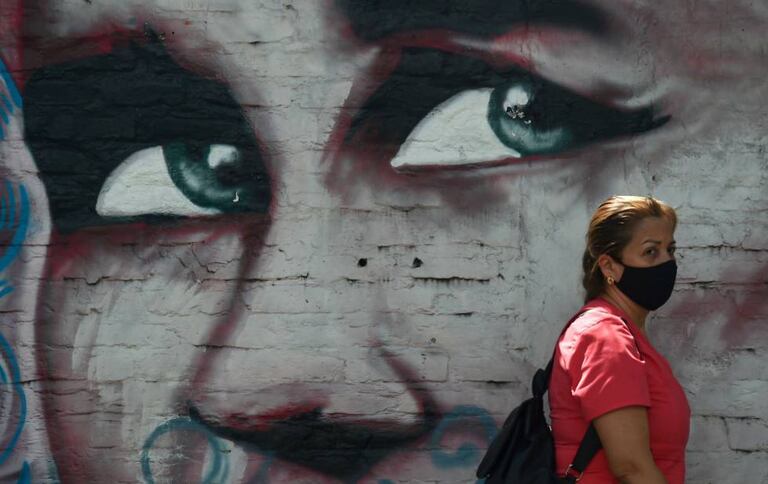A woman wears a mask on the streets of Cali, Colombia.Luis ROBAYO / AFP
In Colombia, just over 50% of working-age women are out of the labor force, and those with a job earn 27% less than men.
The figure comes from the report
Women and men: gender gaps in Colombia,
by UN Women, the Presidential Council for Women and the National Administrative Department of Statistics (DANE), which presents a detailed overview of the economic, educational and social situation. violence against women in Colombia between 2008 and 2019.
The document shows as an advance that the labor participation of women has increased by more than six percentage points, going from 46.4% to 53.1%, but it recognizes that enormous inequalities persist that begin from adolescence and are even stronger in the field.
The gap in relation to men is still 20.8 points (73.9% of them are part of the labor force).
“The incorporation of women into the labor markets has made significant progress, but it still occurs in disadvantageous conditions that are expressed in higher unemployment, greater informality, concentration in certain occupations and also, in the lower parts of hierarchical structures and, in the persistence of the wage gap ”, indicates the report presented this Tuesday.
But being in the labor market does not guarantee equal conditions either.
Although they work 2 hours and 10 minutes more daily than men and also take care of care work in their homes, they earn 27% less per month than men.
"Women's work options are extremely limited by the responsibility for unpaid domestic and care activities, which falls disproportionately on them," says the report supported by DANE statistics.
And those disadvantageous working conditions are reflected in poverty rates: for every 100 men in poor households, there are 118 women.
For Patricia Fernández Pacheco, Deputy Representative at UN Women, one of the novelties of the publication is the focus on unpaid domestic work.
“It was already a matter of analysis before the covid-19 pandemic.
This crisis has shown sustainability in its distribution but also a recognition of its economic value ”, he said.
In Colombia - adds Fernández - the production of unpaid care services mostly performed by women is equivalent to 20 percent of the Gross Domestic Product (GDP).
“Of the 37 billion hours that are dedicated annually to the care and well-being of the population without receiving payment, 29 billion are performed by women, while men dedicate 8 billion hours,” he explained.
Violence against women
"Pregnancy and motherhood in adolescents is an expression of gender and ethnic inequalities," adds the report in which data is provided on the number of child mothers and child marriage, a practice that is considered distant but is real in many regions of Colombia.
According to the figures, in 2018, 7,453 girls between the ages of 10 and 14 and 220,868 adolescents between the ages of 15 and 19 have had at least one child.
“Births to girls under the age of 14 represent less than 1% of total births.
However, behind these cases, serious violations of the human rights of girls are configured that must be investigated from a gender and child protection perspective, as well as guarantees of non-repetition ”, the three institutions recommend.
In Colombia, sexual acts with minors under 14 years of age are a crime under the penal code.
The publication also addresses how gender discrimination has its "extreme expression in systematic acts of violence committed against them."
It reveals that in 2019 1,001 women were murdered, according to the National Institute of Legal Medicine and Forensic Sciences and that the aggressors were in their order partners or ex-partners, friends, acquaintances and relatives of the victims.
"The murders of women present particular characteristics, permeated by asymmetric gender relations, in a structure of violence sustained by a society that normalizes, justifies and perpetuates violence by devaluing and degrading girls and women," the publication notes.
The same thing happens in sexual violence.
In 2019 alone, 26,158 medical examinations were carried out for alleged sexual offenses, of which 86.1% were performed on women and of these, an overwhelming majority (85.6%) corresponded to girls and young people under 18 years of age.
"For every man who is a victim of an alleged sexual crime, there are six female victims," clarifies the book, which provides data such as the incidence of sexual crimes concentrated on Sundays or the most common practices against women.

